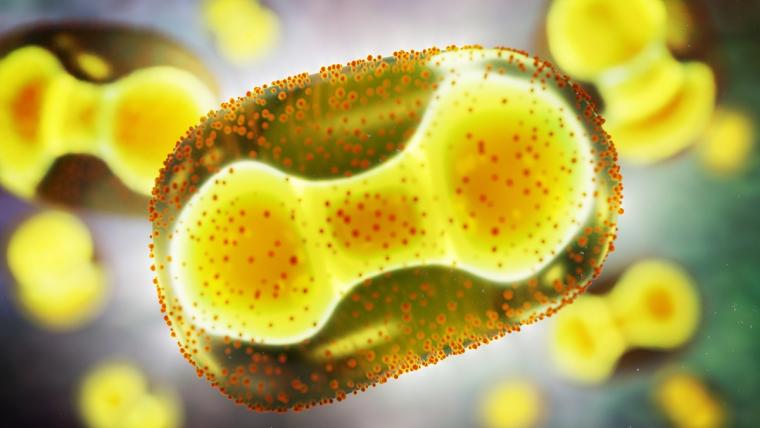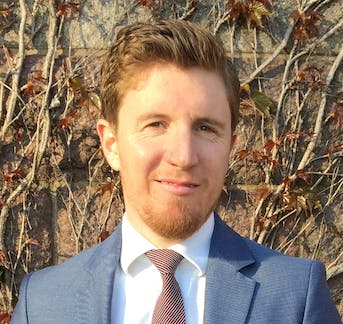
A surge in monkeypox cases globally and the declaration of a new public health emergency in the U.S.—hot on the heels of the pandemic—poses another frustrating health challenge for sports event organizers to manage.
Monkeypox is spread through close contact with an infected person, including by respiratory droplets. Large sporting events, by their nature, have an exceptionally high spreadability risk.
The virus produces nasty symptoms, including a trademark rash - unavoidable evidence of infection. This rash can take up to four weeks to clear, meaning that anyone infected in the lead up to an event would be forced into isolation. Things become compounded if those in isolation perform key job functions and there is no one to take their place, or if a whole group of employees are recovering at the same time, potentially impacting running of a successful event. This is why a monkeypox outbreak among the event's organizers or the competing teams could be catastrophic.
 SaferMe has worked through the Covid-19 pandemic, helping organizations including the ATP manage virus cases around key events and ensuring these events could run successfully despite the challenges posed by the virus. Here are some lessons from these experiences that can help event organizers mitigate risks amid the rise in monkeypox cases.
SaferMe has worked through the Covid-19 pandemic, helping organizations including the ATP manage virus cases around key events and ensuring these events could run successfully despite the challenges posed by the virus. Here are some lessons from these experiences that can help event organizers mitigate risks amid the rise in monkeypox cases.
1. Monitor key authoritative organizations – and update a multi-functional internal team
The first point may appear obvious - but closely following national organizations such as the Centers for Disease Control and Prevention, Health and Human Services, as well as your local state and county health departments, is vital for event preparation in the U.S. By doing so, your management team will receive the latest data on where monkeypox cases are occurring and whether cases are at a level that could potentially impact your event. Think of this as pre-event health intelligence – and it is very important.
What your team then does with this information is also critical. The best practice approach is to have a multi-functional virus response team that follows the virus’ development and constantly assesses its risk potential. This team should frequently be receiving and discussing this information and making appropriate preparations in each area of the event organizing team.
In addition, you team should keep in contact with external experts such as insurance agencies, private public health advisors, lawyers, crisis communication experts, and other safety and risk advisors. That network of experts provides an objective, 360-degree risk perspective of what's happening, the potential effects and the risks involved.
2. Know the different risks for employees working at the event, competitors, and fans
Based on what is currently known about monkeypox, the risk for fans at a sports event may be lower than the risk competitors and event staff face. Event organizers must consider the needs of each group and provide relevant advice.
A key point to remember about monkeypox when considering staff and competitors is that the isolation period for those that have tested positive for the virus, can be up to four weeks, due to the infectious rash that people with the virus develop.
This means the impact of a monkeypox outbreak can be devastating for an event, particularly where highly trained employees are required to carry out skilled work that cannot be handed out to other employees at the last minute. This should be strongly considered by your organizing committee and leadership team when they plan a virus response and toolkit.
It is true that event organizations cannot be too cautious, but at the same time they cannot overreact and impede their ability to successfully execute the event. Therefore, the risk mitigation strategy or virus management strategy becomes the pivotal piece of preparation for any event organizer.
As a very minimum your staff and competitor groups will need regular communication before the event to remind them of the risk of the virus, what symptoms to look for, and how to best avoid infection. Protocols on how positive cases of the virus will be treated should be established early and communicated clearly so staff and competitors understand the process of what needs to be done and the impact if they become infected or infect fellow employees or team members.
3. Monitor employee health in the run up to the event – especially visible signs
At a basic level there are three key issues to address when trying to manage a viral illness in an organization: measures to prevent the virus from entering the organization; measures to help you become aware when the virus does enter; and measures to slow or stop the spread when positive cases of the virus do occur.
Preventing the virus from entering an event context is largely about strong communication and helpful information to staff and participants. Some measures can be applied to various processes in the event facilities that help avoid close contact between employees, and between employees and competitors.
Monitoring the health of staff and competitors in the lead up to your event is an excellent way to give you an early alert to when cases of the virus are present.
Sports event organizers should start monitoring employee and participants’ health through simple web or app-based reporting. This provides the event organizer with real-time information and enables them to act to prevent single cases from becoming a cluster of cases. It is also quicker and less invasive than the Covid-era phone tree which is now outdated.
4. Implement an alert capability for contact tracing
Sports event organizers need to be able to quickly and easily alert employees or participants of a suspected case and suspected transmission of monkeypox. Time is of the essence and the sooner people that have physically interacted with the infected case, or have been within six feet of them, are reached via contact tracing, the sooner the spread of the virus can be shut down without it significantly impacting the event.
The most effective and scalable way to manage contact tracing in an event context is to use an automated wearable system. These systems are low touch for staff and participants as they automatically and safely collect contact data and maintain privacy.
The alternative of trying to manually contact trace using interviews and other techniques is slow and lacks the accuracy of specialist wearable systems. In addition, there is always a time delay in trying to reach people and interview them to obtain the crucially needed data on which to base decisions that could impact a sporting event.
5. Roll out a monkeypox and wider virus strategy for the organization
The organizations and events that have fared best through the Covid-19 pandemic have all proactively had a clear virus strategy in place that has guided their response to these unprecedented challenges.
Sports event organizers are strongly advised to roll out a monkeypox and wider virus strategy for their company well ahead of scheduled events – and regularly review and update all plans. This will help align all stakeholders around how the event will respond when challenges inevitably arise.
This strategy needs to involve a multi-disciplinary team and the basic components of the strategy are setting the responsibilities for each department and the roles of all members of the team, pre-planning for each event and designating who will lead the response in any urgent situation. The strategy also calls for documenting the process for how the organization will aim to keep the virus out, how it will notify close contacts, and how it will attempt to slow or stop the spread if cases arise.
Importantly, the strategy should identify and aim to pre-procure the items it needs in its toolkit to manage the virus. This must include everything from hygiene equipment to communications material and contract tracing systems.
The real risk for event organizers facing monkeypox, and indeed any virus, is not being ready – not proactively having the necessary plans, strategies, tactics and processes in place.
The cost of insufficient preparation for event organizers is simply too high and these can include a disrupted or canceled event, negative media coverage, damaging social media posts, and a tarnished professional image that can be extremely difficult to overcome.
We are aware of the monkeypox virus, it has been declared a public health emergency, and it comes off the back of a global pandemic. So, there is little excuse for failing to prepare thoroughly so you can truly mitigate the risks monkeypox and other viral illnesses pose.

